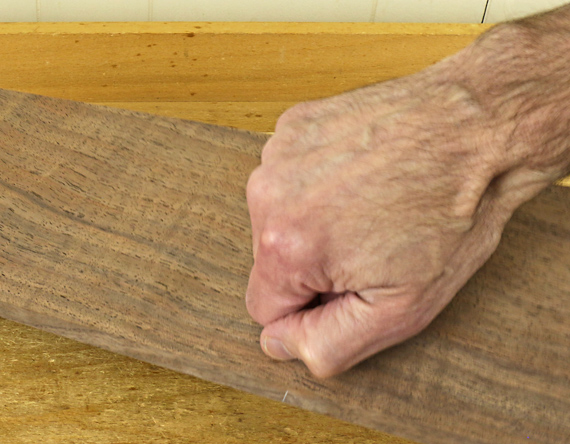
Have you listened to your woodwork lately?
We are all cognizant of the visual beauty of wood, its tactile warmth and texture, and the memorable scents produced while working at least some species. But here is a reminder to tune in to the sweet sound of wood.
Notice the resonance when closing a lid or drawer made of solid wood. Or the sound of a ceramic bowl placed on a solid wood table. Compare those to the discomforting clamor of melamine-coated particleboard. The sound of real wood just seems like the ease and contentment of home.
Our lives are filled with the cacophony of sheet metal, glass, plastic, and concrete. How welcome is the comforting sound of solid wood.
We woodworkers create in a very special material.
I recall even early in my youth intuitively sensing that there was something special about wood, and some of that came through its sounds. I remember particularly a sturdy solid wood truck in the kindergarten room and the sounds of loading it with solid wood blocks. That rig had a dignity unmatched by plastic stuff.
Of course, the sound produced from wood reaches its full potential in musical instruments. Remarkably, even with all the advances in materials science, the best acoustic strings and woodwinds are still made from wood. And some of that acoustic magic is present in the solid wood furniture and household objects that we make.
Take notice and enjoy!


Not only that, I maintain that there is a specific quality to the sound that boards make when they contact if the boards are milled flat and square. It’s hard to pin down, but I can almost tell square by the sound.
Aaron,
Yea, that soft whoosh, like a vent closing, as the flat surfaces meet and push away all the air.
Different thing than what I was writing about but still interesting. Another thing to be aware of as we work with wood.
Thanks.
Rob
By comparing the sounds produced from striking a series of glut, the ear can detect how much stress is one each as they are driven into the end of a green log. Progressing with even force into the length of the fiber bundles, the symphony of crackles and plunks reaches a crescendo with a satisfying thunderous thunk and the section is halved. The process continues until the log is rendered sectionally into manageable sizes.
On a slightly different subject, if you look at Paul Sellers videos, he often points to the change of sound and the feed backs the sound provides:
– when reaching the end of a saw operation;
– when chopping a mortise : tap tap tap … tap tumb (when you should stop whacking and leverage);
– he says he can adjust the lateral lever of his plane by the sound it makes while planing a board edge alternatively with the right and left side of his plane.
There are probably other ones I didn’t catch.
Sylvain